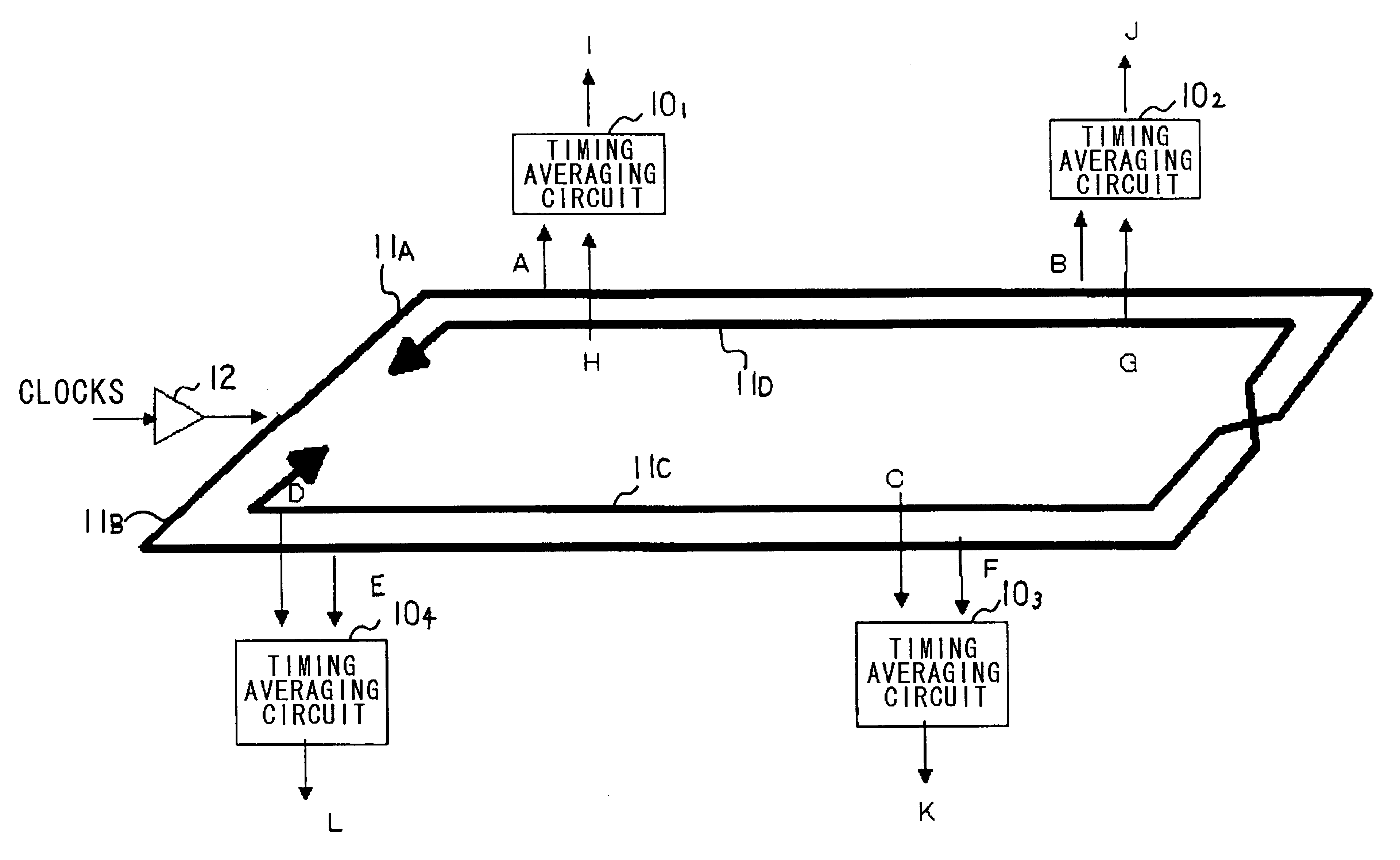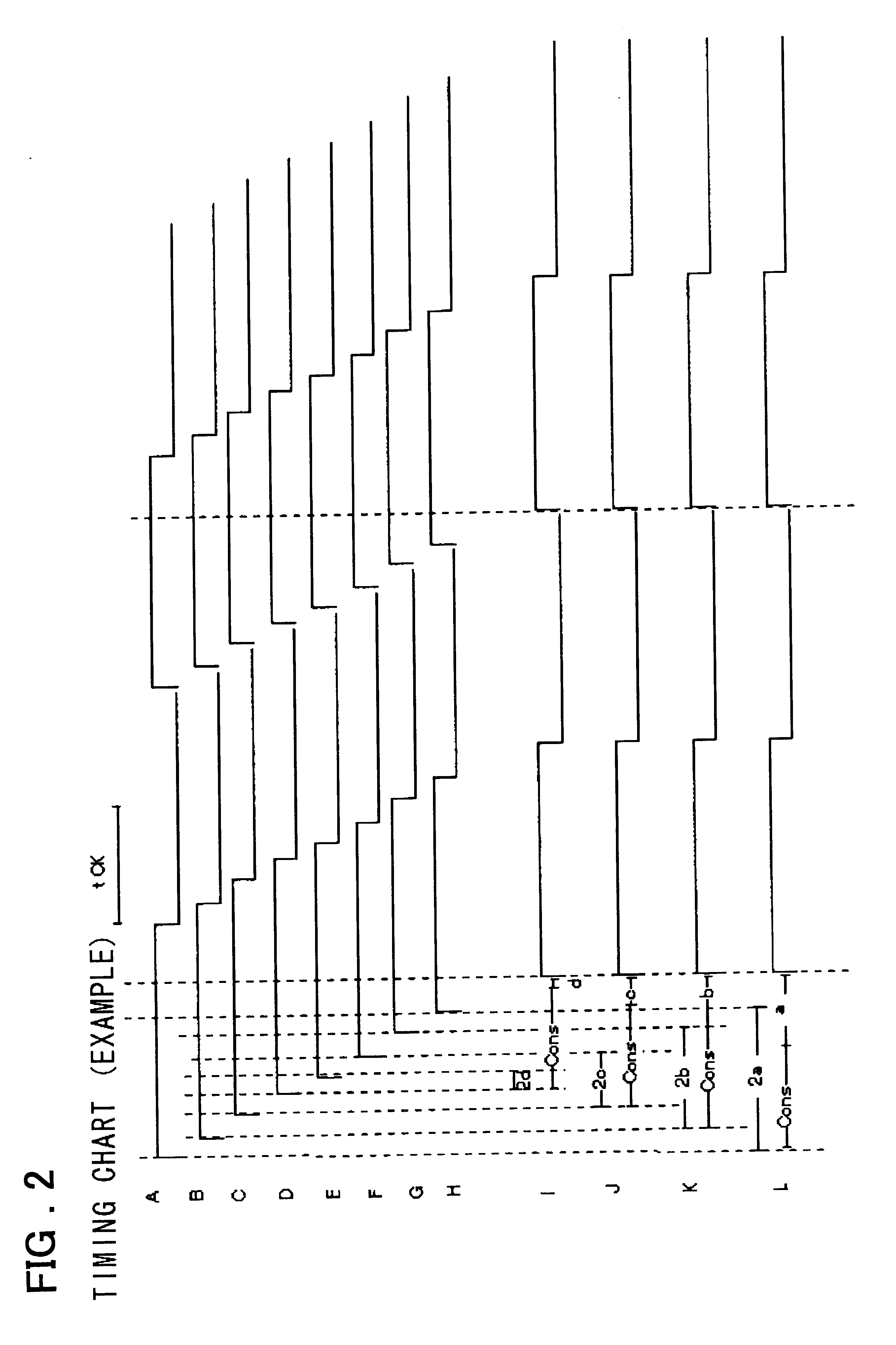Clock control circuit and method
a control circuit and clock technology, applied in the direction of generating/distributing signals, pulse techniques, instruments, etc., can solve the problems requiring a longer period of time by about hundreds to thousands of cycles, etc., to prevent the circuit scale from increasing, the effect of increasing the circuit scale and shortening the tim
- Summary
- Abstract
- Description
- Claims
- Application Information
AI Technical Summary
Benefits of technology
Problems solved by technology
Method used
Image
Examples
second embodiment
In the present invention, the timing averaging circuit 10 may be configured as shown for example in FIGS. 6 to 8. The timing averaging circuit 10, shown in FIGS. 6 to 8, averages the rising and falling timings of the clock signals. The timing averaging circuit, shown in FIG. 3a, is configured for outputting a rising signal prescribed by the delay time obtained on equally dividing the timing difference of the rising edges of the two clock signals. The timing averaging circuit shown in any of FIGS. 6 to 8 may be applied with advantage to a configuration of furnishing clocks to a circuit adapted for operating using both rising and falling edges.
The timing averaging circuit, shown in FIG. 6, is now explained.
Referring to FIG. 6, the timing averaging circuit includes a p-channel MOS transistor MP51, having its source connected to a source VCC, a p-channel MOS transistor MP2 having its source connected to a drain of the p-channel MOS transistor MP1, an n-channel MOS transistor MN51, havin...
third embodiment
Thus, in the present embodiment, the clocks of each point of the forward route 11.sub.1 and the return route 11.sub.1 of the clock propagation path are frequency divided by four in the frequency dividing circuits 101.sub.1, 101.sub.2 to generate four-phase clocks to generate four signals obtained on averaging the timing differences of the two corresponding frequency divided clocks in the timing averaging circuit, these four signals being synthesized to one signal P by the synthesis circuit 16. Since the output of the synthesis circuit 16 is equivalent to the multiplexed output, the delay magnitude of the clock path can be matched solely by the timing averaging circuits 100.sub.1 to 100.sub.4 provided with the frequency dividing function, without using the multiplexing circuit, even if the delay magnitude on the clock propagation path of the frequency divided clocks is longer than the clock period. The circuit scale of the present embodiment not provided with the multiplexing circuit...
fourth embodiment
FIG. 18 shows a timing chart illustrating the operation of the present invention.
The frequency dividing circuits 101.sub.1, 101.sub.2 fed with signals at points A and H output signals A1 to A4 and B1 to B4 obtained on frequency division by four, with the timing averaging circuit 102.sub.1 outputting a signal corresponding to a mean value of the timing differences of the signals A1 and B1, with the timing of the post-synthesized output signals M to P being corresponding with one another.
PUM
 Login to View More
Login to View More Abstract
Description
Claims
Application Information
 Login to View More
Login to View More - R&D
- Intellectual Property
- Life Sciences
- Materials
- Tech Scout
- Unparalleled Data Quality
- Higher Quality Content
- 60% Fewer Hallucinations
Browse by: Latest US Patents, China's latest patents, Technical Efficacy Thesaurus, Application Domain, Technology Topic, Popular Technical Reports.
© 2025 PatSnap. All rights reserved.Legal|Privacy policy|Modern Slavery Act Transparency Statement|Sitemap|About US| Contact US: help@patsnap.com



